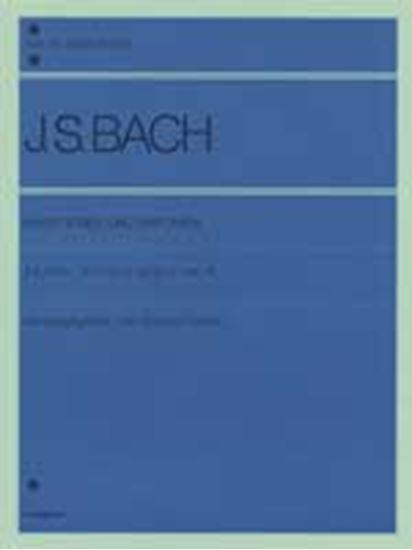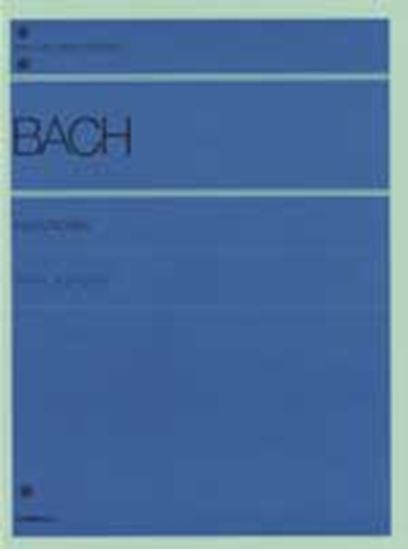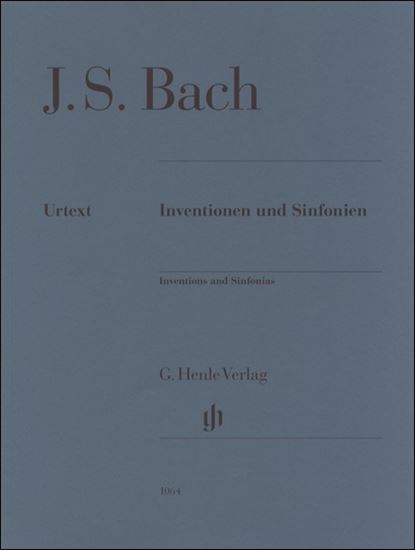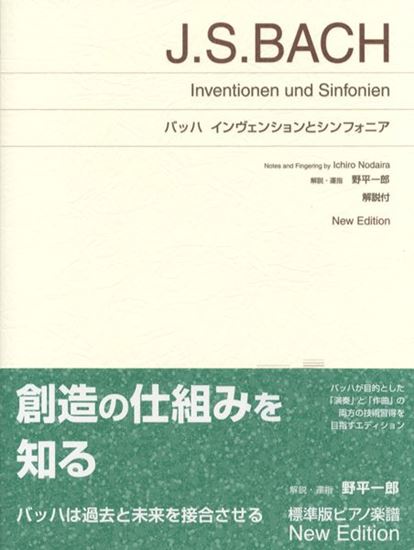Bach, Johann Sebastian : Sinfonia Nr.5 Es-Dur BWV 791
Work Overview
Genre:pieces
Total Playing Time:1 min 20 sec
Copyright:Public Domain
Commentary (3)
Author : Takamatsu, Yusuke
Last Updated: September 18, 2020
[Open]
Author : Takamatsu, Yusuke
E-flat major, 3/4 time.
The bass part forms a basso ostinato (ground bass), repeating a fixed melodic pattern, reminiscent of a trio sonata consisting of two principal voices (obbligato) and a basso continuo. At first glance, the two principal voices appear to play freely over a constant harmonic support, but the middle voice imitates the upper voice, revealing that it is written with extensive use of counterpoint.
The entire piece is structured in two well-balanced sections, with the second half beginning at measure 17.
Author : Hayashikawa, Takashi
Last Updated: March 15, 2018
[Open]
Author : Hayashikawa, Takashi
The notation for the lower voice has been omitted because the form involves the upper two voices repeating imitations over a consistent bass line. Furthermore, the imitations have been numbered for convenience.
Score example provided by: Bärenreiter Verlag
Author : Ooi, Kazurou
Last Updated: March 12, 2018
[Open]
Author : Ooi, Kazurou
Sinfonia No. 5 in E-flat Major
This is a highly unusual Sinfonia. The bass, soprano, and alto are not in a fugal texture. How improvisationally this Sinfonia can be performed is also an important factor. Before proceeding, it's important to note that this Sinfonia exists in two versions: one with mordents and one without (with the exception of measure 12). While it might be beneficial to study the version without mordents first before moving on to the one with them, this is entirely at your discretion. From this point forward, our discussion will focus on the ornamented version.
As mentioned previously, the trills written in the Henle edition come in two sizes: large and small. Those written large must be played, while the smaller mordents are considered optional for the performer, meaning they can be played or omitted. To avoid confusion with single-note ornaments, I will explain this using the first four measures as an example.
In measure 1, what you see are large trills and turns, so these must definitely be played. In measure 2, the E-flat written before the quarter note D in the right hand on beat 1 is not a trill, so it should be played. The same applies to the trill and turn in the inner voice on beat 3. In measure 3, on beat 1, the right hand has ornaments on both the soprano and alto, so these should be played. The same applies to beat 3. In measure 4, on beat 1, play the two right-hand ornaments as well, and on beat 3, you will find small trills and turns. The ornament D should be played, but the trills and turns written simultaneously for both soprano and alto can be played or omitted.
Playing so many trills, turns, and ornaments naturally requires a certain amount of time. This, in turn, determines the tempo. By playing these mordents, please establish a tempo that feels natural and unforced. Furthermore, there may be sections where trills and turns require more time than in other places. The author believes that this is perfectly acceptable for this Sinfonia.
Now, upon analyzing this Sinfonia, it can be divided into three or four sections. This is because the divisions occur where the left-hand figuration changes, and that marks a cadential form. Observing the left-hand figuration, after one sixteenth rest, three sixteenth notes enter on the first beat, and quarter notes appear on the second and third beats. This pattern is present throughout almost the entire Sinfonia. However, the points where this pattern breaks are the cadences. These occur between measures 11-12 and again between measures 27-28 with the same figuration. Thus, since the piece has two cadences, it can be divided into three sections. I also mentioned four sections earlier; I will elaborate on that later.
Let's assume a division into three sections. What I want you to notice is what happens two measures before each cadence. From G in the right hand on beat 2 of measure 9 to C in measure 10, and from A-flat in the right hand on beat 2 of measure 10 to D in measure 11, these are two ascending sequences. This is a section of increasing tension, ultimately modulating to C minor.
And two measures before the second cadence: from C in the right hand on beat 2 of measure 25 to D-flat in measure 26, and from F in the right hand on beat 2 of measure 26 to G on beat 1 of measure 27, these are also ascending sequences. Whenever you reach these two turning points, an ascending sequence is always present. Comparing the first and second instances, the first ascends and modulates to C minor, while the second, despite ascending, modulates from F minor to A-flat major, which I believe is a section where the tension, if anything, relaxes. From this perspective, although the figurations of the two cadences are identical, perceive them as having different characters.
Now, let's discuss the possibility of dividing this piece into four sections. I just mentioned that the left-hand figuration differs in measures 11-12 and 27-28. However, there is one more measure with a different figuration: measure 24. The left hand in this measure descends. This is a figuration that has not appeared before.
Since the piece modulates to F minor at this point, this can also be considered a cadence. Furthermore, if measures 1-12 are considered one section, that section comprises 12 measures. However, if you proceed 12 measures from measure 13, you arrive precisely at the point where the figuration changes (measure 24). This means that when divided into three sections, the second section has more measures than the first.
Performers, based on their own judgment or that of their teacher, should divide the piece into three or four sections and consider what happens within each. For example, measures 1 to 12 form the first section. Within this, consider where the tension is highest and how to approach the music leading up to that point.
For instance, if you trace only the melody line, there is a group of notes E-flat F E-flat D in measures 1-2, and a descending sequence D-flat E-flat D-flat C in measures 2-3. F G F E-flat is in measures 3-4, and E-flat F E-flat D is in measures 4-5. How should these four sequences be dynamically shaped?
Furthermore, D G G C is in measures 5-6, and C F F B is in measures 6-7. Then, in measure 9, the music settles into E-flat major. From this point, the ascending sequence discussed earlier begins, tension increases, and the music modulates to C minor. Performers should consider the pitch, chord types, and other factors of these sequences to determine a logical approach.
PTNA & Partner Channel Videos(2items)
Sheet MusicView More
Scores List (42)

カワイ出版

(株)ヤマハミュージックエンタテインメントホールディングス

(株)全音楽譜出版社

(株)全音楽譜出版社

(株)ドレミ楽譜出版社

(株)音楽之友社

(株)全音楽譜出版社

(株)音楽之友社

(株)音楽之友社

(株)ドレミ楽譜出版社

(株)ドレミ楽譜出版社

(株)ドレミ楽譜出版社

(株)ドレミ楽譜出版社

ヘンレー

ヘンレー

カワイ出版

(株)渓水社

(株)音楽之友社

(株)全音楽譜出版社

(株)エー・ティ・エヌ

(株)全音楽譜出版社

カワイ出版

(株)音楽之友社

(株)音楽之友社

ヘンレー

ヘンレー

(株)学研プラス

















